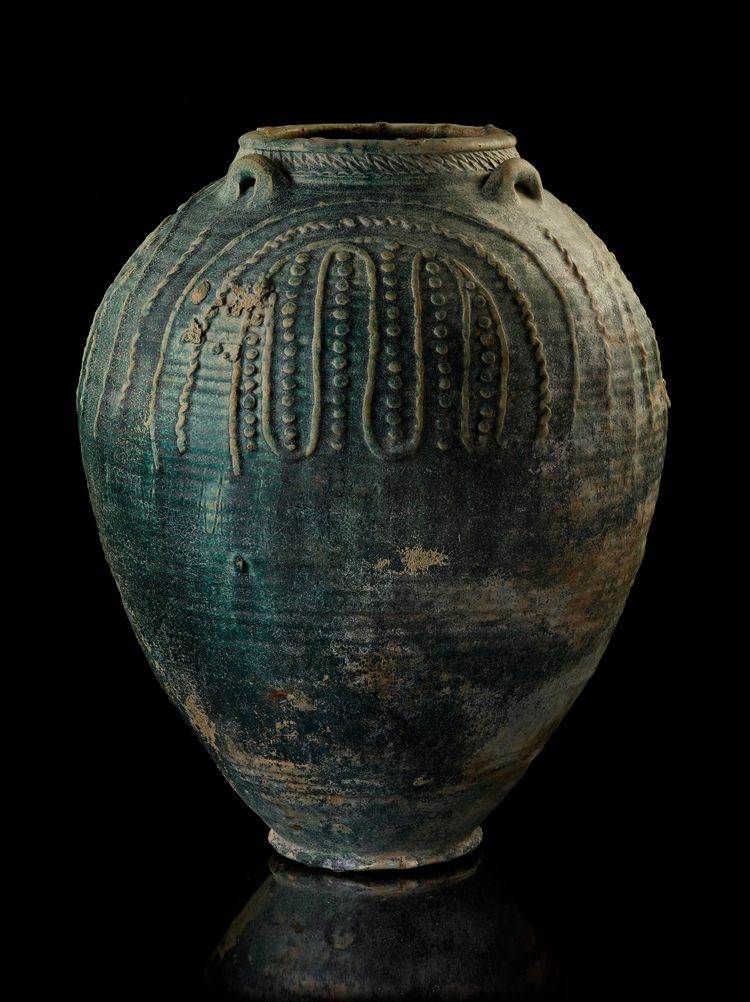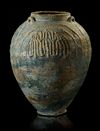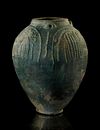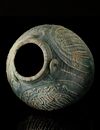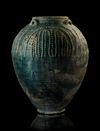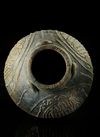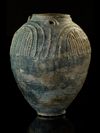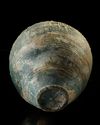A POST SASSANIAN TURQUOISE GLAZED POTTERY STORAGE JAR, IRAN OR IRAQ, 7TH-8TH CENTURY
The egg-shaped jar, with three small handles, is covered entirely with a heavy dark-green glaze, which is common in Sassanid ceramic production. The decoration is based on a series of concentric circles in relief finished off in the middle with a motif of a stylised bunch of grapes, which is related to a widespread tradition of symbolic figures. Below the brim there is a geometric motif in relief made up of small rhombuses, The shape, decoration and technique used in the piece are evidence of the stylistic continuity between the late Sassanid and the early Islamic periods. The jar was probably intended to store foodstuffs. Through stylistic analysis. The shape and decoration of the jar, the technique used and the dark green glaze are all typical of Sassanid ceramics. 50 cm.
PROVENANCE Private collection, The Netherlands
CATALOGUE NOTE This type of alkaline-glazed pottery, intended for storage of food stuffs or drinking water, had been produced in kilns along the Upper Euphrates since at least the Parthian period continuing through the Umayyad and early Abbasid periods, with subtle changes in shape and design. The distinctive silvery iridescence offset by the turquoise glaze only adds to their decorative appeal. Their story is also fascinating, for examples have been found as far afield as Fujian province in China. A tomb at Lotus Peak on the outskirts of Fuzhou, dedicated to one Liu Hua, who died in A.D. 930, wife of King Wang Yangjun of the Min Kingdom (A.D. 909-945), yielded three similar turquoise-glazed jars, testament to the trading activities of Persian and Arab merchants along the southern coast of China at this time.
